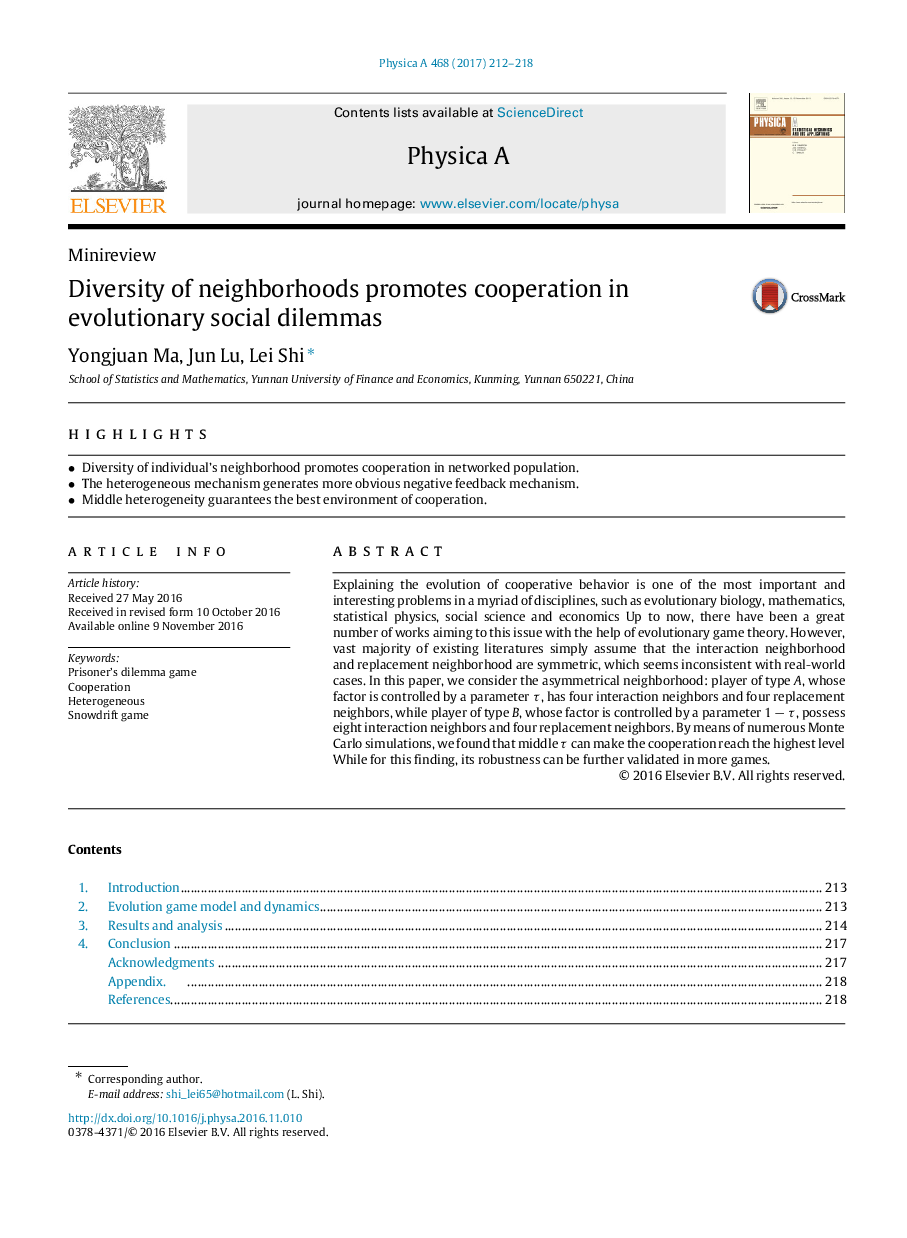| Article ID | Journal | Published Year | Pages | File Type |
|---|---|---|---|---|
| 5103500 | Physica A: Statistical Mechanics and its Applications | 2017 | 7 Pages |
Abstract
Explaining the evolution of cooperative behavior is one of the most important and interesting problems in a myriad of disciplines, such as evolutionary biology, mathematics, statistical physics, social science and economics Up to now, there have been a great number of works aiming to this issue with the help of evolutionary game theory. However, vast majority of existing literatures simply assume that the interaction neighborhood and replacement neighborhood are symmetric, which seems inconsistent with real-world cases. In this paper, we consider the asymmetrical neighborhood: player of type A, whose factor is controlled by a parameter Ï, has four interaction neighbors and four replacement neighbors, while player of type B, whose factor is controlled by a parameter 1âÏ, possess eight interaction neighbors and four replacement neighbors. By means of numerous Monte Carlo simulations, we found that middle Ï can make the cooperation reach the highest level While for this finding, its robustness can be further validated in more games.
Related Topics
Physical Sciences and Engineering
Mathematics
Mathematical Physics
Authors
Yongjuan Ma, Jun Lu, Lei Shi,
